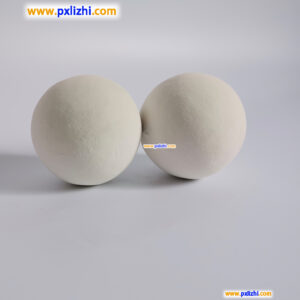
# Inert Ceramic Ball Applications in Industrial Processes
## Introduction to Inert Ceramic Balls
Inert ceramic balls are high-performance ceramic spheres widely used in various industrial applications. These balls are manufactured from high-quality ceramic materials that exhibit excellent chemical stability, thermal resistance, and mechanical strength. Their inert nature makes them ideal for processes where chemical reactions with process materials must be avoided.
## Key Properties of Inert Ceramic Balls
Inert ceramic balls possess several unique characteristics that make them valuable in industrial settings:
- High chemical resistance to acids, alkalis, and organic solvents
- Excellent thermal stability, maintaining structural integrity at high temperatures
- Superior mechanical strength and wear resistance
- Low water absorption and porosity
- Uniform size and spherical shape for consistent performance
## Major Industrial Applications
Keyword: inert ceramic ball
1. Catalyst Support in Petrochemical Industry
Inert ceramic balls serve as excellent catalyst supports in petroleum refining and petrochemical processes. They provide a stable base for active catalysts while ensuring proper gas or liquid distribution through the reactor bed. Their thermal stability is particularly valuable in processes like catalytic reforming and hydrocracking.
2. Tower Packing in Chemical Processing
These ceramic balls are extensively used as tower packing materials in distillation, absorption, and stripping columns. Their uniform shape and size create optimal void spaces for efficient mass transfer between liquid and vapor phases while minimizing pressure drop.
3. Grinding Media in Mineral Processing
The exceptional hardness and wear resistance of inert ceramic balls make them ideal grinding media for ball mills. They outperform traditional steel balls in terms of contamination-free grinding, especially in processing high-purity materials for electronics and pharmaceutical applications.
4. Heat Exchange Media
In high-temperature heat exchange systems, inert ceramic balls function as effective heat transfer media. Their thermal stability allows operation in extreme conditions where metal-based alternatives would fail, such as in regenerative thermal oxidizers.
## Advantages Over Alternative Materials
Compared to metal or plastic alternatives, inert ceramic balls offer distinct benefits:
- Longer service life due to superior wear resistance
- Reduced maintenance requirements and downtime
- Higher temperature operation capability
- No catalytic effect on process streams
- Lower contamination risk in sensitive processes
## Selection Considerations
When choosing inert ceramic balls for industrial applications, several factors should be considered:
- Chemical compatibility with process media
- Operating temperature range
- Required mechanical strength and crush resistance
- Size distribution and packing density requirements
- Surface characteristics (smoothness, porosity)
## Future Trends
The demand for inert ceramic balls continues to grow as industries seek more efficient and environmentally friendly process solutions. Advancements in ceramic technology are leading to even more durable and specialized formulations, expanding their applications into emerging fields like renewable energy and advanced materials processing.